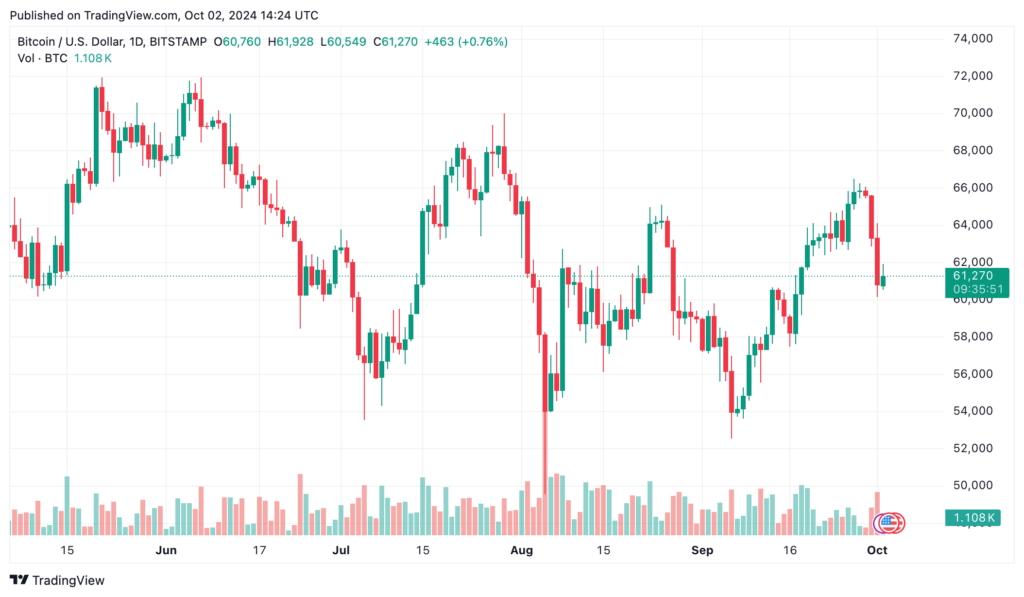October Volatility- Bitcoin’s Worst Start to October in Years Amid Global Conflict
October Volatility– Bitcoin (BTC) experienced a notable rise above $61,500 during the Asian morning hours on Wednesday after plummeting to as low as $60,300 late Tuesday. This decline occurred amidst escalating conflict in the Middle East, which has dampened expectations for a rally during what is historically Bitcoin’s most bullish month.
Escalating Conflict Affects Market Sentiment
On Tuesday, Iran launched approximately 200 ballistic missiles at Israel, signaling a potential escalation in hostilities. Prime Minister Benjamin Netanyahu has vowed to retaliate, further heightening tensions in the region. This strike was a response to recent Israeli attacks on Lebanon. As a result of these developments, Bitcoin recorded its largest drop in over a month, experiencing a decline of 6% at one point, with 24-hour losses reaching 3.5%. According to Presto Research, this marks the worst start for Bitcoin in its historically bullish October.
Market Reactions and Comparisons with Gold
Polymarket bettors are currently estimating a 49% chance that Israel will retaliate against Iran by the end of the week. Historically, October has been a strong month for Bitcoin, with only two losing years out of the last eleven. Researchers from Presto noted gold’s outperformance during this period, highlighting that last night’s BTC price action (BTC -4% vs. gold +0.8%) in response to the Iran attack is perplexing, especially considering BlackRock’s recent pitch for Bitcoin as a risk-off asset akin to gold. They remarked, The reality is that the difference in these two assets’ short-term price actions reflects their different maturity phases.
Broader Market Impact and Altcoin Performance
The broader CoinDesk 20 (CD20) index saw a decline of 4.7%, marking its worst drop in recent weeks. The researchers emphasized, Gold is a much more mature asset, with a 5,000-year history as a store of value, so there’s not much room left for incremental network effects. Conversely, Bitcoin shares similar attributes to gold but is still in the early stages of mainstream adoption with only a 15-year history.

Among major tokens, Dogecoin (DOGE) led the losses with an 8% decline over the past 24 hours, according to CoinGecko data. Other cryptocurrencies, including XRP, Solana’s SOL, BNB Chain’s BNB, and Ether (ETH), experienced losses of up to 6%. Smaller tokens with market caps under $2 billion fared even worse, with Sei Network’s SEI, memecoin Floki (FLOKI), and Starknet’s STARK dropping as much as 16%.
FAQs
What caused Bitcoin’s recent price fluctuations?
Bitcoin’s recent price fluctuations were primarily driven by escalating geopolitical tensions, particularly following Iran’s missile attacks on Israel. This conflict raised concerns among investors, leading to panic selling and significant losses in the crypto market.
How did Bitcoin perform compared to gold during this period?
During the recent turmoil, Bitcoin fell significantly, with a drop of up to 6% at one point, while gold experienced a slight gain of 0.8%. This divergence highlights the maturity difference between the two assets, with gold being a long-established store of value compared to Bitcoin’s relatively shorter history.
















Leave a comment